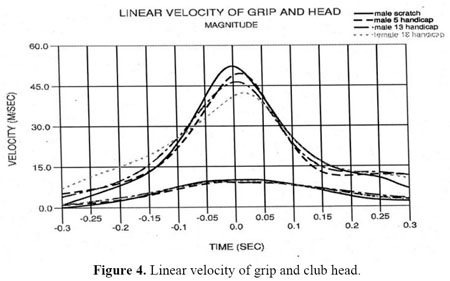birdie_man
New
I like the image of shooting your arms off your torso in front of the ball.
Daniell
I think that you are correct that it is critical to know when the rotation should stop (when the kinetic chain should snap). I think that if the rotation stops BEFORE impact, then there will be a greater likelihood of flipping and having the clubhead reach impact prior to the hands. I think that the rotation should stop just AFTER impact, so that one can sustain fast hands, and thereby sustain lag, through the impact zone.
Jeff.
Golfers who "snap" their release are probably more likely to have a rotational release, which may produce too much variability in clubface control through the impact zone.
Jeff.
GolfVn - you write -: "If the rotation stops after impact (meaning the chain is snapped after impact) then what benefits would there be? Since the club is not released and throw out action is too late (ball gone) ..."
You seem to believe that the snapping of the kinetic chain is REQUIRED for club release to happen. I believe that there is no necessary causal connection between snapping of the kinetic chain and club release. NMGolfer has demonstrated that the release is due to happen anyway (due to the club's acquistion of anglar momentum during the downswing) and that the release starts to happen before the kinetic chain snaps tight.
Jeff.
I watched the video three times, and did the drill a half dozen times. Yesterday I hit the ball better than I have all year, longer and straighter. This video is eye opening and revolutionary to my game.
How does one accurately determine the "true" velocity of the conjoined hand unit (which is at the end of the left arm) from the time it passes the right thigh (delivery position) to impact - as compared to its velocity in the time period just before the hands reach the outer border of the right thigh - that would allow one to assert that the conjoined hand unit slows down appreciably just before impact?
Consider the following statement-: "I was shocked by how obvious the "braking" phenomena is as the club approaches impact. Hogan's left arm drops very quickly from about shoulder high to thigh high, then almost stops as the wrists uncock and the club is "released"."
How does one accurately determine the "true" velocity of the conjoined hand unit (which is at the end of the left arm) from the time it passes the right thigh (delivery position) to impact - as compared to its velocity in the time period just before the hands reach the outer border of the right thigh - that would allow one to assert that the conjoined hand unit slows down appreciably just before impact?
Jeff.
Consider the following statement-: "I was shocked by how obvious the "braking" phenomena is as the club approaches impact. Hogan's left arm drops very quickly from about shoulder high to thigh high, then almost stops as the wrists uncock and the club is "released"."
How does one accurately determine the "true" velocity of the conjoined hand unit (which is at the end of the left arm) from the time it passes the right thigh (delivery position) to impact - as compared to its velocity in the time period just before the hands reach the outer border of the right thigh - that would allow one to assert that the conjoined hand unit slows down appreciably just before impact?
Jeff.


